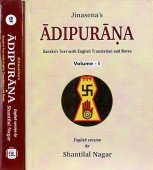Dika, Ḍīka, Ḍikā, Ḍika: 7 definitions
Introduction:
Dika means something in Hinduism, Sanskrit, Marathi, Jainism, Prakrit, Hindi, biology. If you want to know the exact meaning, history, etymology or English translation of this term then check out the descriptions on this page. Add your comment or reference to a book if you want to contribute to this summary article.
Biology (plants and animals)
Source: Google Books: CRC World Dictionary (Regional names)1) Dika in Gabon is the name of a plant defined with Irvingia gabonensis in various botanical sources. This page contains potential references in Ayurveda, modern medicine, and other folk traditions or local practices It has the synonym Fegimanra africana (Oliv.) Pierre (among others).
2) Dika in Kenya is also identified with Thilachium africanum It has the synonym Maerua triphylla (Thunb.) Dur. & Schinz (etc.).
Example references for further research on medicinal uses or toxicity (see latin names for full list):
· Die Pflanzenwelt Ost-Afrikas (1895)
· Species Plantarum (1753)
· Bull. Jard. Bot. Belgique (1996)
· Novon (1993)
· Traité de Botanique Médicale Phanérogamique (1884)
· Consp. Fl. Afr. (1898)
If you are looking for specific details regarding Dika, for example pregnancy safety, chemical composition, diet and recipes, side effects, health benefits, extract dosage, have a look at these references.

This sections includes definitions from the five kingdoms of living things: Animals, Plants, Fungi, Protists and Monera. It will include both the official binomial nomenclature (scientific names usually in Latin) as well as regional spellings and variants.
Languages of India and abroad
Marathi-English dictionary
Source: DDSA: The Molesworth Marathi and English Dictionaryḍīka (डीक) [or डीग, ḍīga].—m Gum. ḍikāsa tēla (Just as oil mingles and blends with gum.) A phrase corresponding with Admirable! capital! excellent! exactly as could be wished!
Source: DDSA: The Aryabhusan school dictionary, Marathi-Englishḍīka (डीक) [or ḍīga, or डीग].—m Gum. ḍikāsa tēla Admir- able! capital! excellent.
Marathi is an Indo-European language having over 70 million native speakers people in (predominantly) Maharashtra India. Marathi, like many other Indo-Aryan languages, evolved from early forms of Prakrit, which itself is a subset of Sanskrit, one of the most ancient languages of the world.
Sanskrit dictionary
Source: DDSA: The practical Sanskrit-English dictionaryḌikā (डिका).—A very small winged insect (such as gnat); Mahābhārata (Bombay) 14.9.29, com.
Sanskrit, also spelled संस्कृतम् (saṃskṛtam), is an ancient language of India commonly seen as the grandmother of the Indo-European language family (even English!). Closely allied with Prakrit and Pali, Sanskrit is more exhaustive in both grammar and terms and has the most extensive collection of literature in the world, greatly surpassing its sister-languages Greek and Latin.
Hindi dictionary
Source: DDSA: A practical Hindi-English dictionaryDika (दिक) [Also spelled dik]:—(nm) tuberculosis; (a) vexed, harassed; fed up; —[karanā] to harass.
...
Prakrit-English dictionary
Source: DDSA: Paia-sadda-mahannavo; a comprehensive Prakrit Hindi dictionaryDika (दिक) in the Prakrit language is related to the Sanskrit word: Dvika.
Prakrit is an ancient language closely associated with both Pali and Sanskrit. Jain literature is often composed in this language or sub-dialects, such as the Agamas and their commentaries which are written in Ardhamagadhi and Maharashtri Prakrit. The earliest extant texts can be dated to as early as the 4th century BCE although core portions might be older.
Nepali dictionary
Source: unoes: Nepali-English DictionaryḌika (डिक):—n. mortgage; security; contract;
Nepali is the primary language of the Nepalese people counting almost 20 million native speakers. The country of Nepal is situated in the Himalaya mountain range to the north of India.
See also (Relevant definitions)
Starts with (+17): Dika bread tree, Dika nut, Dika nut tree, Dika-lekhidinu, Dika-malli, Dikaamaali, Dikaamali, Dikadani, Dikadu, Dikahav, Dikahu, Dikaios, Dikala, Dikali, Dikam, Dikamali, Dikamalli, Dikamari, Dikambidjumdi, Dikamli.
Ends with (+627): Abdika, Abhaidika, Abhyushakhadika, Acchaidika, Acchedika, Achchhaidika, Achchhedika, Adadika, Addika, Adhivedika, Adhyayapancapadika, Adika, Adindika, Adishabdika, Aggapindika, Agrodika, Ahindika, Ahitundika, Ahladika, Aikapadika.
Full-text (+23): Tittida, Dikavani, Cuditika, Candimahatmya, Naladika, Dika-malli, Kaunakhyadika, Dika-lekhidinu, Dika nut tree, Kankan dika, Pasandika, Dika bread tree, Dika nut, Candigriha, Hadi-dika-araung, Shaundikeya, Jambudi, Idadika, Dvika, Tundita.
Relevant text
Search found 3 books and stories containing Dika, Ḍīka, Ḍikā, Ḍika; (plurals include: Dikas, Ḍīkas, Ḍikās, Ḍikas). You can also click to the full overview containing English textual excerpts. Below are direct links for the most relevant articles:
Chaitanya Bhagavata (by Bhumipati Dāsa)
Verse 3.4.20 < [Chapter 4 - Descriptions of Śrī Acyutānanda’s Pastimes and the Worship of Śrī Mādhavendra]
Verse 3.4.105 < [Chapter 4 - Descriptions of Śrī Acyutānanda’s Pastimes and the Worship of Śrī Mādhavendra]
Verse 2.4.45 < [Chapter 4 - Revelation of Nityānanda’s Glories]
The gods of northern Buddhism (by Alice Getty)
Apadana commentary (Atthakatha) (by U Lu Pe Win)
Establishing Many Monasteries < [Part 3 - Discourse on proximate preface (santike-nidāna)]
Related products
